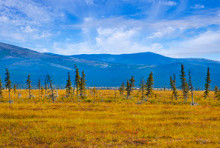Microbes as the unknown variable in thawing permafrost
Permafrost covers a quarter of the Earth’s land surface and stores significant amounts of carbon. As global temperatures rise and cause the frozen soils to thaw, so have concerns on the fate of the stored carbon and on the global climate. One of the recent studies that looked at this question was conducted by researchers… [Read More]
